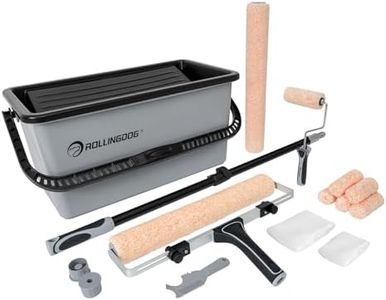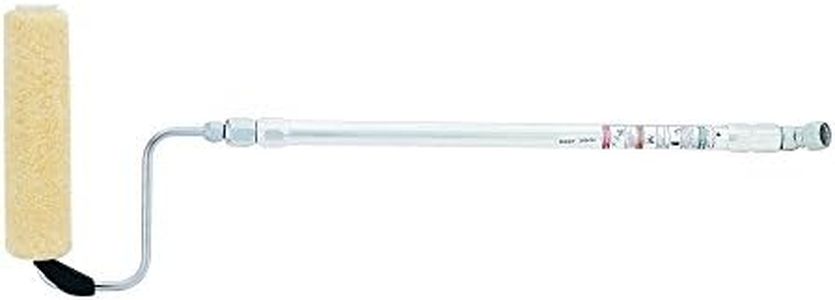We Use CookiesWe use cookies to enhance the security, performance,
functionality and for analytical and promotional activities. By continuing to browse this site you
are agreeing to our privacy policy
4 Best Power Paint Rollers
From leading brands and best sellers available on the web.By clicking on a link to a third party's website, log data is shared with that third party.
Buying Guide for the Best Power Paint Rollers
Choosing a power paint roller can make your painting projects much faster and more efficient, especially when dealing with large surfaces like walls, ceilings, or fences. The right product can save you time, reduce fatigue, and help you achieve a smoother, more consistent finish compared to traditional manual rollers. Before you buy, think about your typical painting needs: Are you doing whole rooms, tricky corners, exterior surfaces, or just the occasional wall? With a clear idea of your tasks, you can focus on the key features that matter most for your situation.Power SourcePower paint rollers are usually powered either by batteries or by plugging into a wall outlet. Battery-operated models offer better mobility since you don’t have to worry about cords, making them great for projects where you move around a lot or have limited access to power. Plug-in models generally provide more consistent power and can be used for longer periods without stopping, which suits big, uninterrupted painting sessions. Think about where you’ll be working—indoors with outlets nearby or outside/on ladders where portability is key—to decide which power option fits you best.
Roller SizeRoller size refers to the width and sometimes the diameter of the painting roller. Most power rollers come in common widths such as 9 inches, which are good for standard walls, or 7 and 4 inches for tight spaces or trim. A larger roller covers more surface quickly but can be tricky to maneuver in corners or on small areas, while a smaller roller lets you get into detailed spots but takes longer for big surfaces. Choose wider rollers for mostly broad, flat walls or exteriors, and narrow ones if you expect to paint lots of corners or small spaces.
Paint Feed SystemThis is how the roller draws paint from the source—some use a hose and pump directly from the paint can, while others have a built-in reservoir in the handle. Models that draw from a can are best for long sessions and large jobs since you don’t have to refill as often, whereas a built-in reservoir is more convenient for quick jobs or touch-ups but may require more frequent refilling. Think about how often you’ll be painting and the size of your projects to decide which type will keep your workflow smooth and efficient.
Ease of CleaningCleaning up after painting can be time-consuming, so pay attention to how easily the roller and the feed system can be taken apart and rinsed out. Some models are designed with quick-release or easy-flush features, while others can be tricky, involving multiple steps. If you expect to use the roller often, or if you dislike tedious clean-up, look for one that has simple, straightforward cleaning instructions. This can save you a lot of hassle and keep your roller in good shape for longer.
Weight and BalancePower rollers can be heavier than manual ones, especially when filled with paint or equipped with batteries. The weight and balance will affect how tired you get and how easily you can control the roller. Heavier rollers may feel sturdy, but they can be exhausting for large or overhead jobs. If you have limited strength or need to do a lot of ceiling work, consider a lighter or well-balanced model to make your experience more comfortable and less fatiguing.



